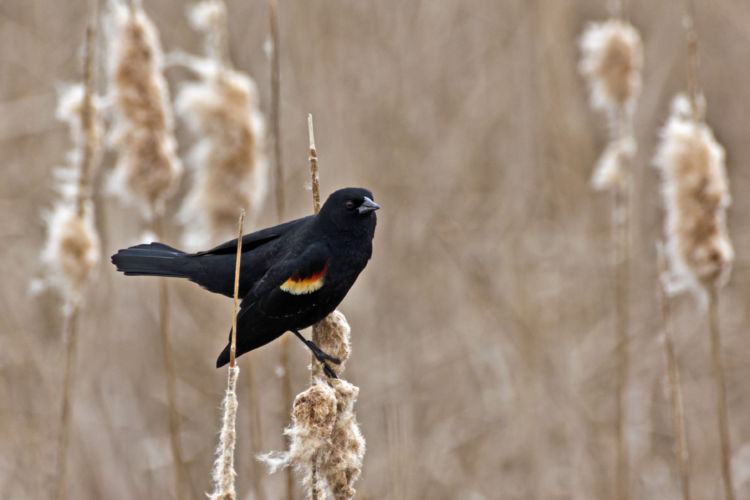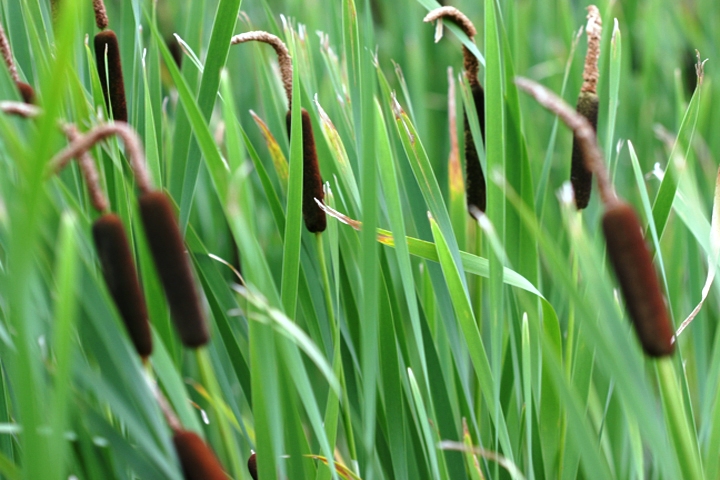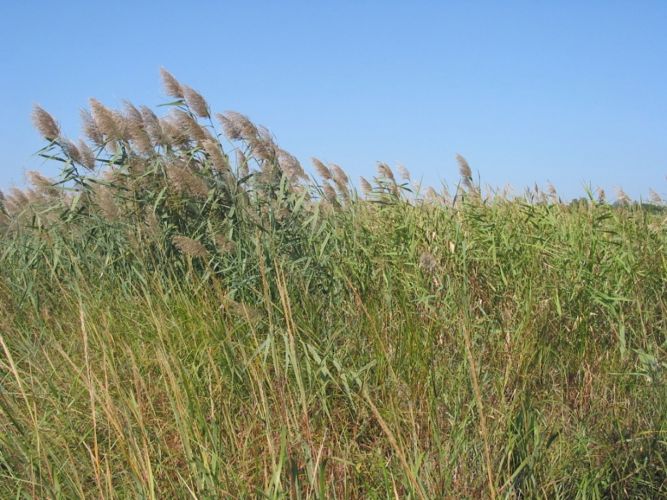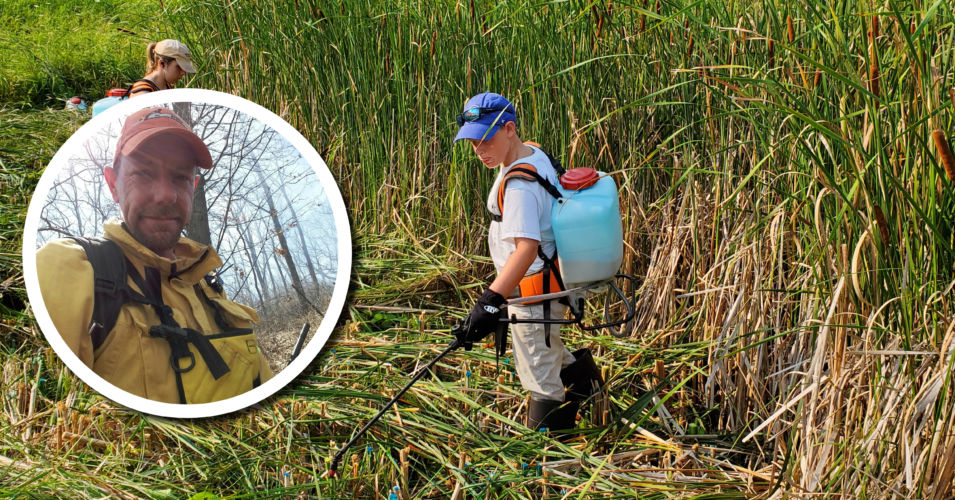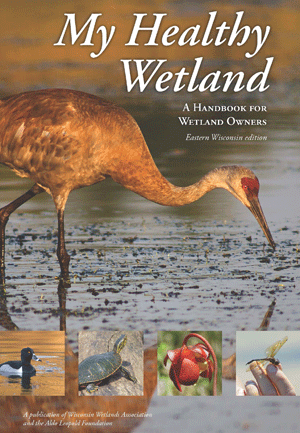Unfortunately the bad guys are very common in Wisconsin (especially the southern part of the state). The cross-breeding between species is so frequent that it has become pretty much impossible to determine the native from the invasive types by what the plants look like.
How do I recognize invasive cattail?
If you have large stands of cattail taking over your wetland, you likely have one of the invasive cattails. While most publications will tell you that the invasive narrow-leaved and hybrid cattail can be distinguished from the native broad-leaved cattails using flowers and leaf width, recent research on cattail genes conducted in by Northeastern Illinois University indicated that using physical characteristics to identify the species of a cattail resulted in a mis-identification of the plant more than 75% of the time. So it’s best to look at how the plant is behaving in your wetland and manage it accordingly. If the cattail is dense and crowds out other native plants, you’ll want to take steps to control it.
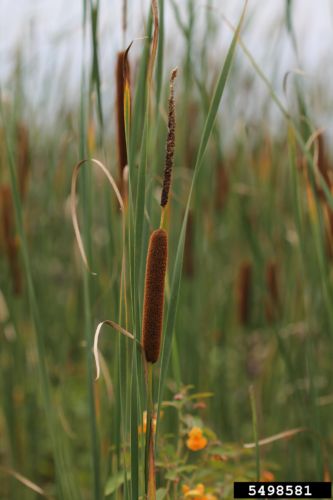
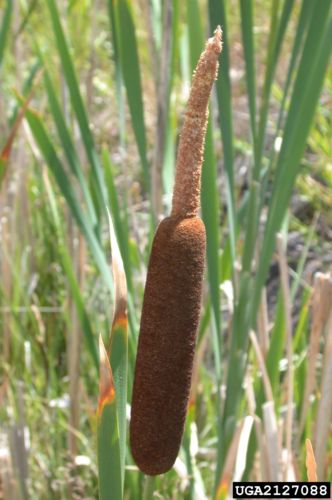
Invasive cattails grow well in wetlands receiving nutrient-rich runoff. Cattail grows in a variety of water depths from very shallow to several feet deep.
How does it spread?
Narrow-leaved cattail spreads mostly by seed. Hybrid cattail spreads aggressively through underground roots.
How do I control it?
The “cut and flood” method of cattail control is very effective. If your timing is good, you can use this method to successfully control cattails without chemicals. The cut and flood method involves mowing or cutting the plants low to the ground and then flooding the site so the water is at least three inches above the cut stems. This treatment works because water seeps into the roots through the cut stems, ironically drowning this water-loving plant. This method is most appropriate for wetlands with water level control structures; however, winter cutting followed by spring flooding may also work on your site. Herbicide, hand-pulling, hand-cutting, and burning can also be effective at knocking back invasive cattail.
You can learn more about cattails on the Southeastern Wisconsin Invasive Species Consortium’s website
Photos by Mary Harte, Rob Routledge, and Pat Trochell
Managing cattails with water level control
Invasive plant profile: Phragmites
Learn how to recognize invasive phragmites and how to manage them on your property.
Wetland Coffee Break: Chemical control of cattail in species-rich wetlands

